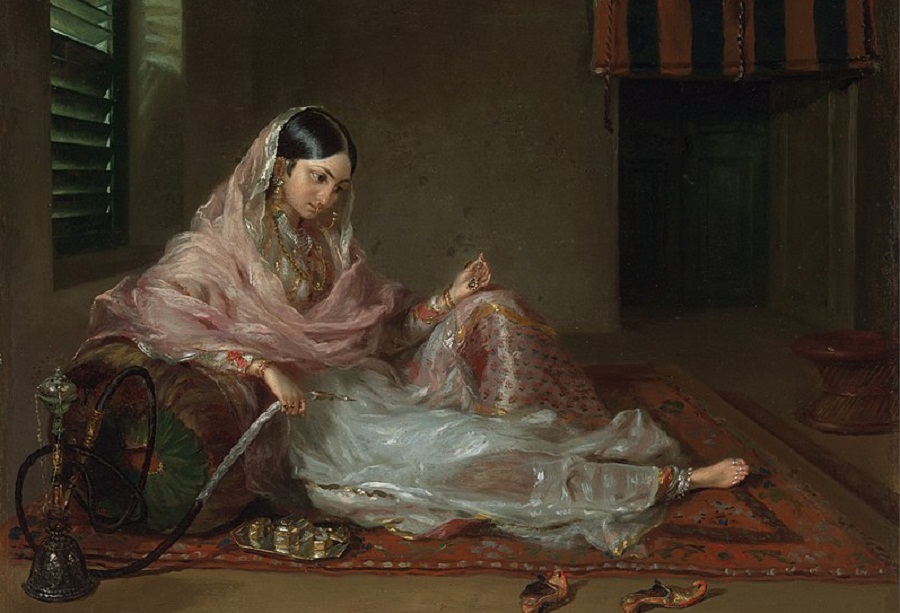Fashion beyond time: The Mughal-inspired designs we have in our saree

Published :
Updated :

The Mughal effect on Bengal is so far-reaching that even to this day, we try to create those culturally illustrious items for ourselves and happily embrace our past to go on in the present. During the Mughal era, alongside the Persian effect that influenced architecture, cuisine, and culture, Bengal's textiles were heavily impacted by the production of fine clothing and utility items that we use to date. Below are Bangladeshi items inspired by the Mughal era that exist even now.
Rajshahi Silk
During the Mughal era, the transport of the famous Silk of Bengal on the Silk Road, which connected China, Europe, and Persia, flourished and quickly gained a reputation.
Rajshahi Silk items come in discrepant varieties of designs and silk types. For being purely made of silk, the items tend to consist of a certain weight, and it's easier to express computerized motifs and machine embroideries on the items. But the solid deal here lies in the quality of the silk of a clothing item that demands a hefty price.

Jamdani
The tale of Jamdani is perpetually attached to Dhaka's Sonargaon and Narayanganj. Under Mughal patronage, the Jamdani textile quickly earned recognition and became one of the most famous luxury clothing items of Bengal, especially in the areas concerning current Bangladesh.
The birth of this luxurious textile happened in the Mughal era, and Jamdani is a Persian term that originated in the Mughal court. The aristocrats of the Mughal period largely favored wearing Jamdani due to its unique natural geometric shapes, the hardship required to produce clothing, and its association with Muslin.
In the Mughal era, Muslin Jamdani received recognition for being the most luxurious and exquisite Muslin variety. Muslin Jamdani is a Jamdani pattern weaved onto a Muslin fabric, and often, Jamdani's references call itself a type of Muslin or a decorated Muslin.
Nakshi Kantha
Nakshi Kantha is an illustrious Bengal textile craft that dates back to its reference in the 15th century. The Mughal era particularly impacted the designs and motifs on the Kantha embroidery, such as the illustrious Kalka motif consisting of elements of nature like trees, animals, mountains, hills, or even cultural elements like mosques, Palkis, dressing rooms, agricultural apparatus, that got expressed through hand-sewing. The motif exists to date, and the uniqueness of the design demands a hefty price.

Katan
Katan originates from Persia and thus has a direct connection with the influence of the Mughal period due to the conspicuous Persian influence in the textile-making culture of the period.
It was the ruling class of Mughals that introduced this textile clothing item. Islamic arts influenced Katan, and its regal aura made it an instant hit and a classic even after so many years. Bridal or party wear Katan remains a first choice for the brides of Bengal, even to this day.

Muslin
The world-famous Dhakai Muslin is set to make a grand comeback. The creation of this textile takes a tremendous amount of effort and hardship. For Muslin to be the most lightweight, transparent, and delicate, the weavers' fingers need to be the most moist.
Muslin weaving requires extra caution since weaving cannot go on for more than a limited time, and weaving can take place only when the weather agrees. The textile was an essential clothing item and the most hefty-priced clothing item in the Mughal era.
The Mughal rulers such as Jahangir, his wife Nur Jahan, the princes and princesses, aristocrats, palace officials, and courtesans wore Muslin on a regular basis. The count of the threads needs to be around 1000 for the fabric to be the delicacy it was in the 18th century.
sofiautilitarian@gmail.com


 For all latest news, follow The Financial Express Google News channel.
For all latest news, follow The Financial Express Google News channel.